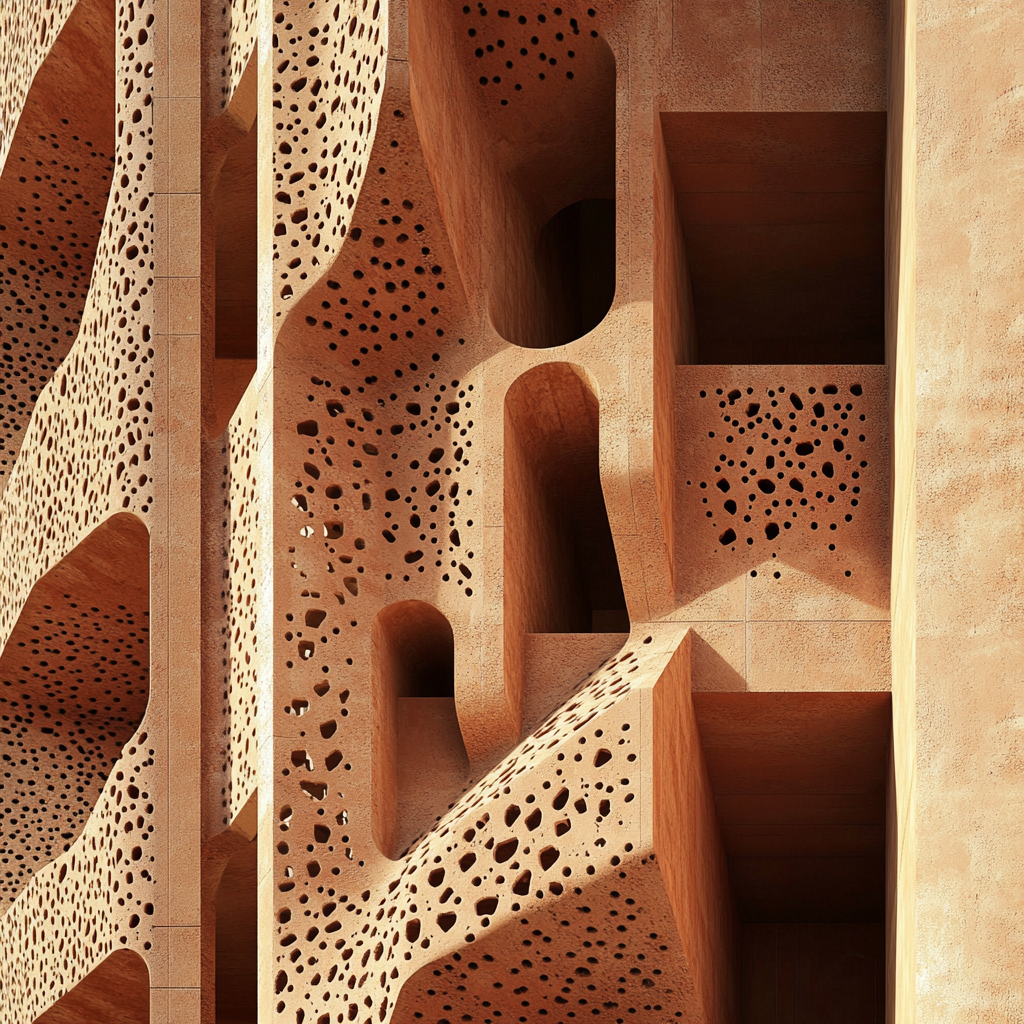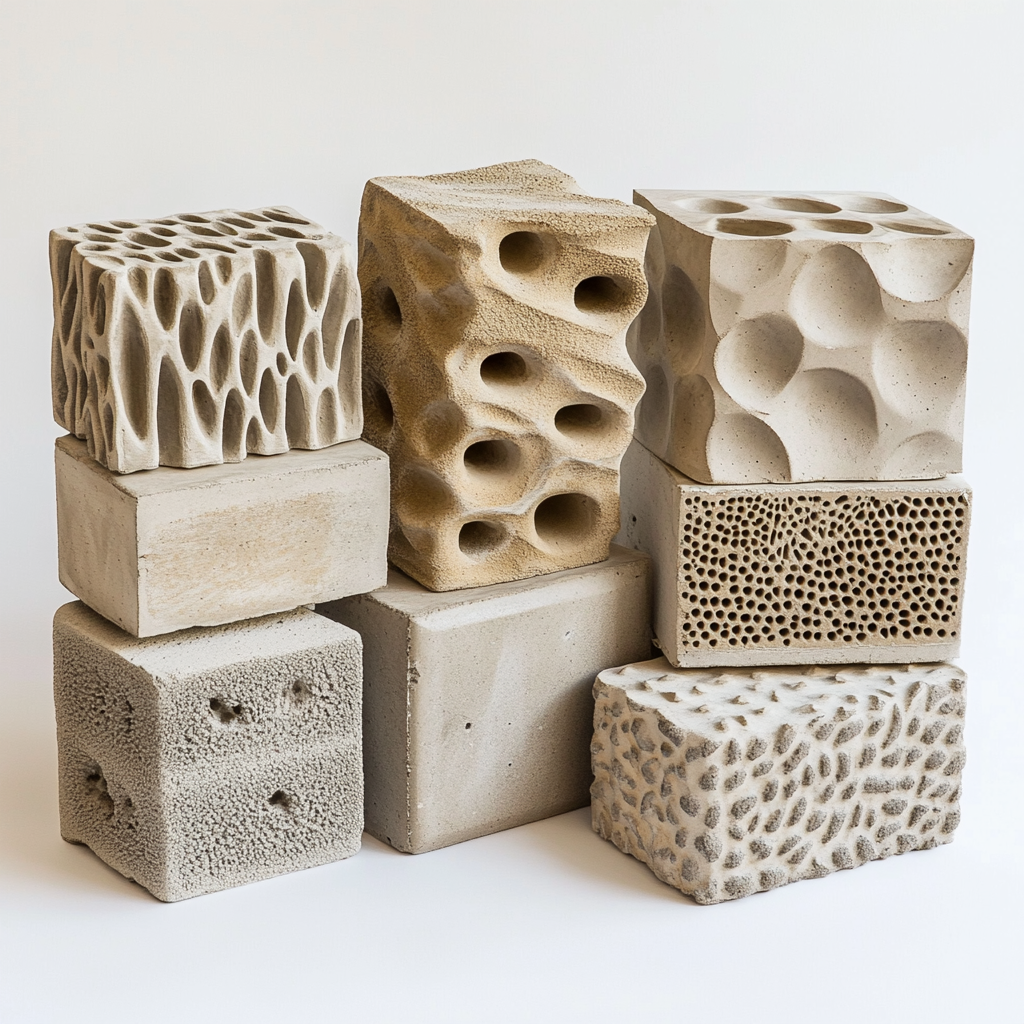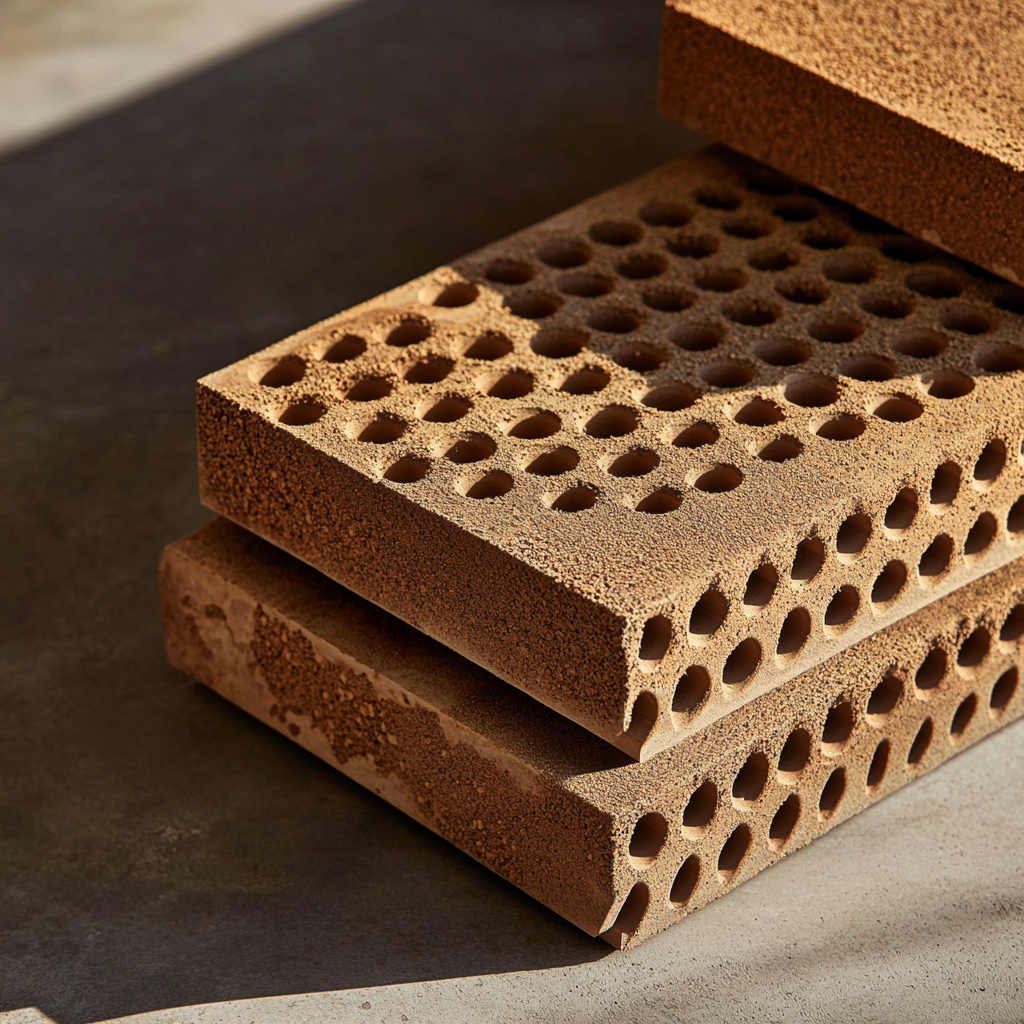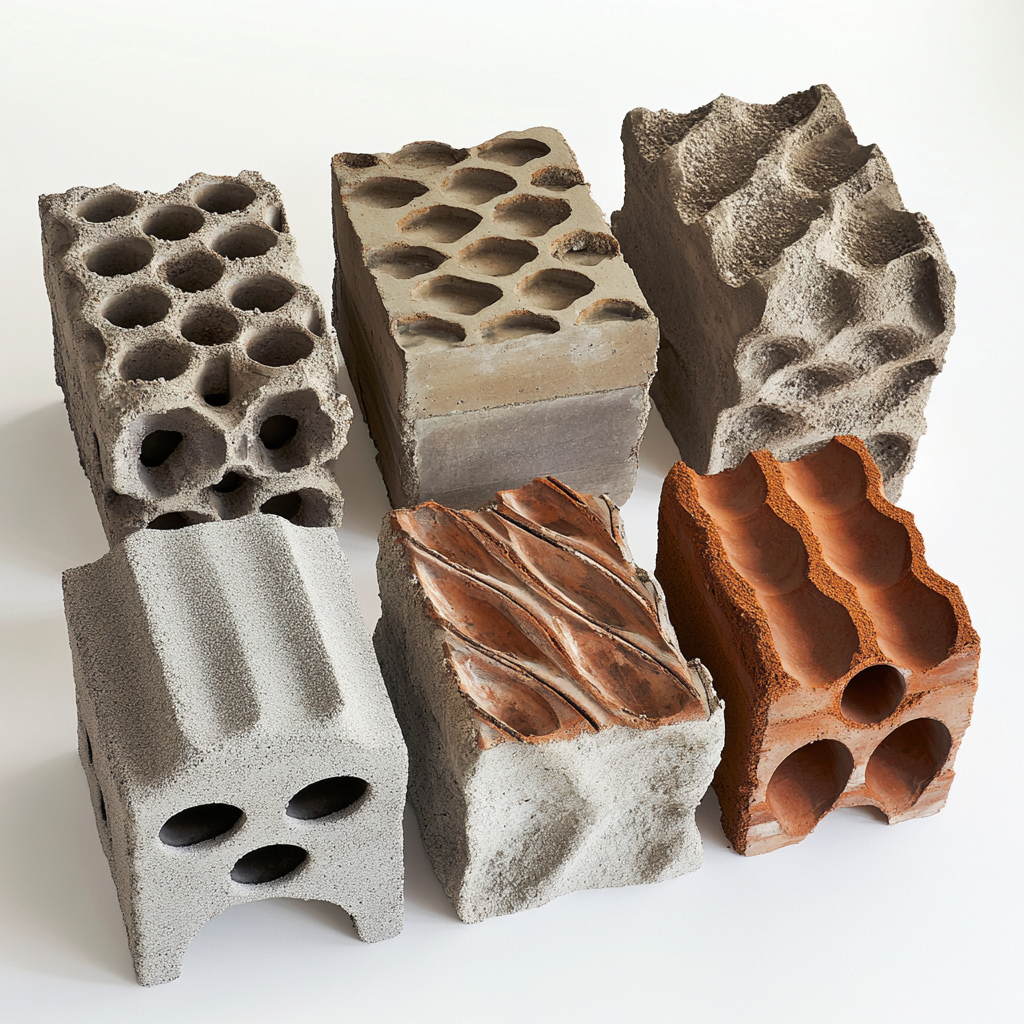Modulated mass. Environmental poise & Community-built futures.
A modular facade system exploring climate-responsive construction through porous, earthen blocks. Engineered for passive ventilation, thermal regulation, and light filtration, each unit is both structural and sensory crafted to adapt to heat, airflow, and local making traditions. Bridging computational design with vernacular knowledge, the project redefines masonry as a tool for environmental and social repair.
In rethinking the brick as more than mere module, the notion of a syntax of brick as language emerges as a critical design lens one that positions the brick not simply as a unit of construction, but as an expressive, communicative element. Within this framework, the arrangement of bricks functions akin to grammatical structure: patterns, voids, overlaps, and alignments generate spatial meaning much like phrases in a language.
Each joint becomes a pause; each shift in rhythm, a form of emphasis. This linguistic approach enables architecture to move beyond tectonic function toward cultural and climatic articulation. Through modulation of density, porosity, and rotation, the brick assembles into narratives of airflow, light play, structural intent, or local craft traditions.
Here, syntax becomes a medium through which architecture speaks: not as monument, but as textured text, responsive to place, material intelligence, and ecological memory.




Constructing Atmospheres: Parametric Bricks as Tools for Community
Across an expanding frontier of material innovation, architecture is beginning to reframe construction not as a final act, but as a generative process. The emergence of parametric bricks perforated, cast, and finely tuned in texture offers a new lens for modular design in hot climates, grounded in environmental performance, local agency, and spatial adaptability.
These experimental units depart from the logic of repetition for its own sake. Their porosity is not decorative it is functional, tactile, and climatic. Each void, channel, and indentation participates in a performative ecology: regulating airflow, diffusing light, reducing heat gain, and attenuating sound. In arid zones, such passive modulation is not an enhancement it is essential.
When aggregated, these bricks become breathable skins facades that inhale, exhale, and recalibrate with the changing climate. But their significance is not only environmental; it is spatial and cultural. Their modularity supports responsive envelopes: bricks double as shading devices, visual screens, or thermal masses depending on dimension and orientation.
This flexibility allows architects to choreograph opacity, texture, and environmental responsiveness across a single surface. Parametrically defined, yet materially grounded, these bricks offer the precision of digital design with the adaptability of craft.
Material experimentation deepens their potential. Earth-lime composites infused with hemp fibre, volcanic ash, or sedimented clay reduce embodied carbon while enhancing compressive strength. Geopolymer binders replace cement, allowing local soils to serve as both context and construction closing the loop between site, structure, and sustainability.
Whether 3D-printed, cast using low-energy molds, or refined manually through community participation, these bricks retain the intimacy of handwork within a high-performance system. Their production invites a new model of architectural authorship one rooted in decentralised fabrication and participatory construction. Villagers, apprentices, masons, and fabricators become co-authors, shaping as much as assembling. Repetition becomes ritual; building becomes a form of knowledge transfer.
Each module is born from a feedback loop between simulation and material testing parameters guided not by aesthetic flourish, but by performance: How much light should pass? How should air circulate? What thickness offers the right thermal lag?
Each brick becomes a climatic cell micro-environments that, in aggregation, constitute architectural climate control.Critically, these systems subvert the industrial logic of imported construction by offering an alternative that is low-tech yet high-agency, modular yet contextually specific, exacting yet porous.
In climates where thermal comfort, water scarcity, and cultural continuity intersect, these bricks are more than components they are propositions. They ask us to build slowly, responsively, and with intention. To construct with rhythm. To design for breath. To embed care into the very grain of architecture.